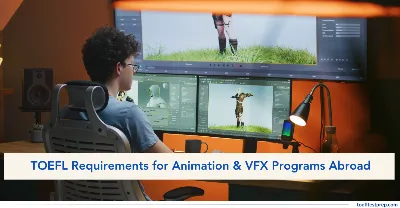TOEFL iBT Writing-Integrated Task
The Integrated Task in the TOEFL iBT Writing section is designed to assess the test takers’ ability to synthesize information from multiple sources and articulate a coherent written response.
The Integrated Task evaluates the candidate’s ability to integrate information from diverse sources and communicate a well-organized response. By understanding the task components, emphasizing key assessment areas, and employing effective preparation strategies, one can approach this task with confidence and strive for success in the TOEFL iBT Writing section.
Overview of the Integrated Task of TOEFL iBT Writing
The Writing section of the TOEFL iBT comprises two distinct tasks: the Integrated Writing task and the Writing for an Academic Discussion task. For the first writing task, you will read a passage, listen to a lecture, and then answer a question based on what you have read and heard. For the second task, you will answer a question based on your own knowledge and experience.
The Integrated Writing task spans 20 minutes and requires synthesizing information. All responses are to be typed using a computer keyboard, and the entire Writing section is expected to be completed in approximately 29 minutes.
Given below is a sample question for the Integrated Task of TOEFL iBT Writing.
Sample Question
Directions: For this task, you will read a passage about an academic topic and you will listen to a lecture about the same topic. You may take notes while you read and listen.
Then you will write a response to a question that asks you about the relationship between the lecture you heard and the reading passage. Try to answer the question as completely as possible using information from the reading passage and the lecture. The question does not ask you to express your personal opinion. You may refer to the reading passage again when you write. You may use your notes to help you answer the question.
Typically, an effective response will be 150 to 225 words. Your response will be judged on the quality of your writing and on the completeness and accuracy of the content
Reading Time : 3 minutes
Altruism is a type of behavior in which an animal sacrifices its own interest for that of another animal or group of animals. Altruism is the opposite of selfishness; individuals performing altruistic acts gain nothing for themselves, Examples of altruism abound, both among humans and among other mammals. Unselfish acts among humans range from the sharing of food with strangers to the | donation of body organs to family members, and even to strangers. Such acts are altru- istic in that they benefit another, yet provide little reward to the one performing the act. In fact, many species of animals appear willing to sacrifice food, or even their life, to assist other members of their group. The meerkat, which is a mammal that dwells in burrows in grassland areas of Africa, is often cited as an example. In groups of meerkats, an individual acts as a sentinel, standing guard and looking out for predators while the others hunt for food or eat food they have obtained. If the sen: tinel meerkat sees a predator such as a hawk approaching the group, it gives an alarm cry alerting the other meerkats to run and seek shelter. By standing guard, the sentinel meerkat gains nothing—it goes without food while the others eat, and it places itself in grave danger. After it issues an alarm, it has to flee alone, which might | make it more at risk to a predator, since animals in groups are often able to work together | 10 fend off a predator. So the altruistic sentinel behavior helps ensure the survival of other members of the meerkat's group.
Now play the audio to hear the question.
Question
Summarize the points made in the lecture, being sure to explain how they oppose
specific points made in the reading passage.
Response Time : 20 minutes
Sample Answer
Here’s a High-Level Response to the above question.
The lecture completely refutes the passage. It is said in the lecture that, the perceived acts of altruism are nothing more than sneaky methods of gaining advantage for one’s self. Contrary to the belief in the passage that sentinels risk their lives for the cause of the whole group, the professor says that the meerkat sentinels are in fact less prone to outside threats. The alarm sentinels give off causes to group to move rashly which draws the predators attention towards them, thus drawing away the attention from the sentinels. The lecture refutes the fact that these meerkats are altruistic in the sense that they gain nothing in exchange for their services. In fact, researches have shown that they have a full stomach as they perform this “altruistic” duty and have a better chance of escaping from danger because they witness it first Professor also offers a different underlying motivation that causes people to believe that acts such as donating an organ or sharing food with someone in need are altruistic. She says that people gain appreciation as a result of such acts, which may be deemed by some much more important than materialistic gains.
Understanding Evaluation Rubrics for the Integrated Task of TOEFL iBT Writing
The Integrated Task in the TOEFL iBT Writing section assesses the ability to synthesize information from a reading passage and a lecture, demonstrating the comprehension and analytical skills of a test taker.
To understand how the responses are evaluated, it's crucial to understand the evaluation rubrics. Here's a detailed look.
| Score | Description |
|---|---|
| 5 | A response at this level successfully selects the important information from the lecture and coherently and accurately presents this information in relation to the relevant information presented in the reading. The response is well organized, and occasional language errors that are present do not result in inaccurate or imprecise presentation of content or connections. |
| 4 | A response at this level is generally good in selecting the important information from the lecture and in coherently and accurately presenting this information in relation to the relevant information in the reading, but it may have minor omission, inaccuracy, vagueness, or imprecision of some content from the lecture or in connection to points made in the reading. A response is also scored at this level if it has more frequent or noticeable minor language errors, as long as such usage and grammatical structures do not result in anything more than an occasional lapse of clarity or in the connection of ideas. |
| 3 |
A response at this level contains some important information from the lecture and conveys some relevant connection to the reading, but it is marked by one or more of the following:
|
| 2 |
A response at this level contains some relevant information from the lecture, but is marked by significant language difficulties or by significant omission or inaccuracy of important ideas from the lecture or in the connections between the lecture and the reading; a response at this level is marked by one or more of the following:
|
| 1 |
A response at this level is marked by one or more of the following:
|
Why Choose TOEFL iBT?
Choosing TOEFL iBT can be a strategic decision for several compelling reasons. Let’s explore the factors that make TOEFL iBT stand out!
Global Recognition
TOEFL iBT scores are widely accepted by universities, colleges, and institutions, making it a global benchmark.

Comprehensive Assessment
It evaluates proficiency in reading, listening, speaking, and writing, providing a well-rounded assessment.

Flexibility in Test Administration
The test allows one to choose from nearby testing locations or the convenience of home to take the exam.

Real-life Situations
TOEFL iBT tasks simulate real-life academic and professional situations to check the candidates’ ability to communicate in different situations.

Regular Updates
TOEFL iBT is regularly updated to align with evolving language standards to ensure its relevance and accuracy.

Preparing for TOEFL iBT? Start your journey with us
Enroll NowFrequently Asked Questions
The Integrated Task of TOEFL iBT Writing assesses skills such as comprehension, integration of information, coherent writing, and effective use of language.
Yes, test-takers are encouraged to take notes during the Integrated Task of TOEFL iBT Writing as they review the reading passage and listen to the lecture.
Responses for the Integrated Task of TOEFL iBT Writing should demonstrate a clear structure, with an introduction, body paragraphs integrating information, and a conclusion summarizing key points.
While there is no strict word limit for the Integrated Task of TOEFL iBT Writing, responses should be concise and focused, typically spanning 150-225 words.
Responses in the Integrated Task of TOEFL iBT Writing are evaluated based on criteria such as content integration, comprehension, organization, and language use, with scores ranging from 0 to 5.
Featured Articles

TOEFL Format Undergoing Significant Changes in January 2026
The TOEFL iBT format is changing in January 2026 with a smarter structure and easier scoring. Here’s everything you need to know to stay ahead.
August 06, 2025
Minimum TOEFL Score Requirement for South Korea Student Visa
Understand the TOEFL requirement for a South Korea student visa and English-taught programs, and prepare your application for success.
September 14, 2025
Minimum TOEFL Score for Study Visa in Poland
Understand TOEFL score requirements for securing a Poland student visa and joining top universities offering English-taught programs.
September 14, 2025
TOEFL Requirements for Animation & VFX Programs Abroad
Discover TOEFL score requirements for studying Animation and VFX abroad, and learn how to meet them for top creative universities.
September 14, 2025
